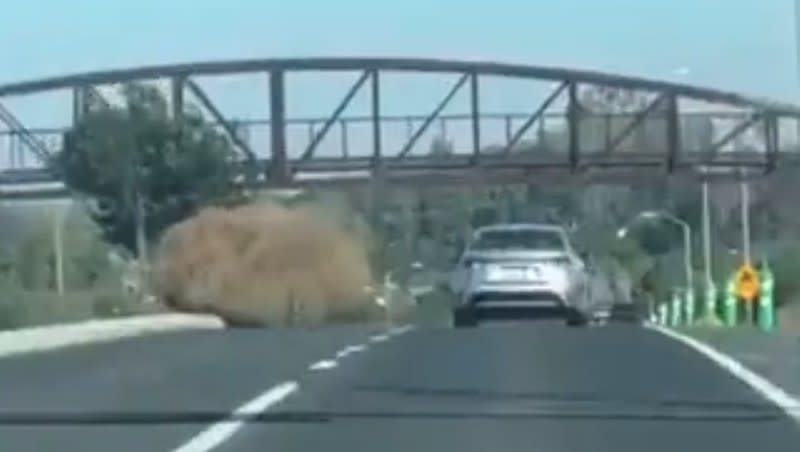Video: Watch a car sized tumbleweed fly down a highway in California

Captioned, “The mother of all tumbleweeds,” an X user posted a video of a tumbleweed the size of a Toyota Corolla rolling down the interstate on Nov. 21 in Southern California.
The National Weather Service in Los Angeles said in an X post, “We saw a giant tumbleweed like this in Simi Valley yesterday! Anyone else in #SoCal have a recent tumbleweed experience due to the #SantaAnaWinds? #CAwx.”
La madre de todas las plantas rodadoras pic.twitter.com/wSJjaWrOKg
— escribano (@tuidelescribano) November 21, 2023
The location of the tumbleweed was first reported as the Simi Valley, but KTLA later reported that it was actually located in Costa Mesa, which is further south, near Huntington Beach.
How did the tumbleweed get so big?
The size of this tumbleweed is most likely caused by the Santa Ana winds, which blow from east to west through the mountains in Southern California, per the NWS. These winds are strongest from Sept. to May.
When high speed winds break prickly Russian thistles (tumbleweeds) off from their roots, they dry out and begin to roll. LA List reported, “Given that they’re a fire hazard, in Los Angeles County, tumbleweeds fall under the weed abatement program. Inspectors go to properties with tumbleweeds and, if deemed a fire hazard, the owner is contacted to have them removed by a set deadline.”
What plant turns into a tumbleweed?
Tumbleweeds begin as Salsola tragus (Russian thistle), small green shrubs, according to Arapahoe Libraries. These plants allegedly first arrived in South Dakota in 1870 on accident along with a delivery of flaxseed.
Breaking off and tumbling around the desert is actually crucial to these plants survival, since that is how tumbleweeds spread their seeds. Tumbleweeds can produce upwards of 250,000 seeds, making them one of the fastest plant invaders the U.S. has ever seen, the Natural History Museum reported.

